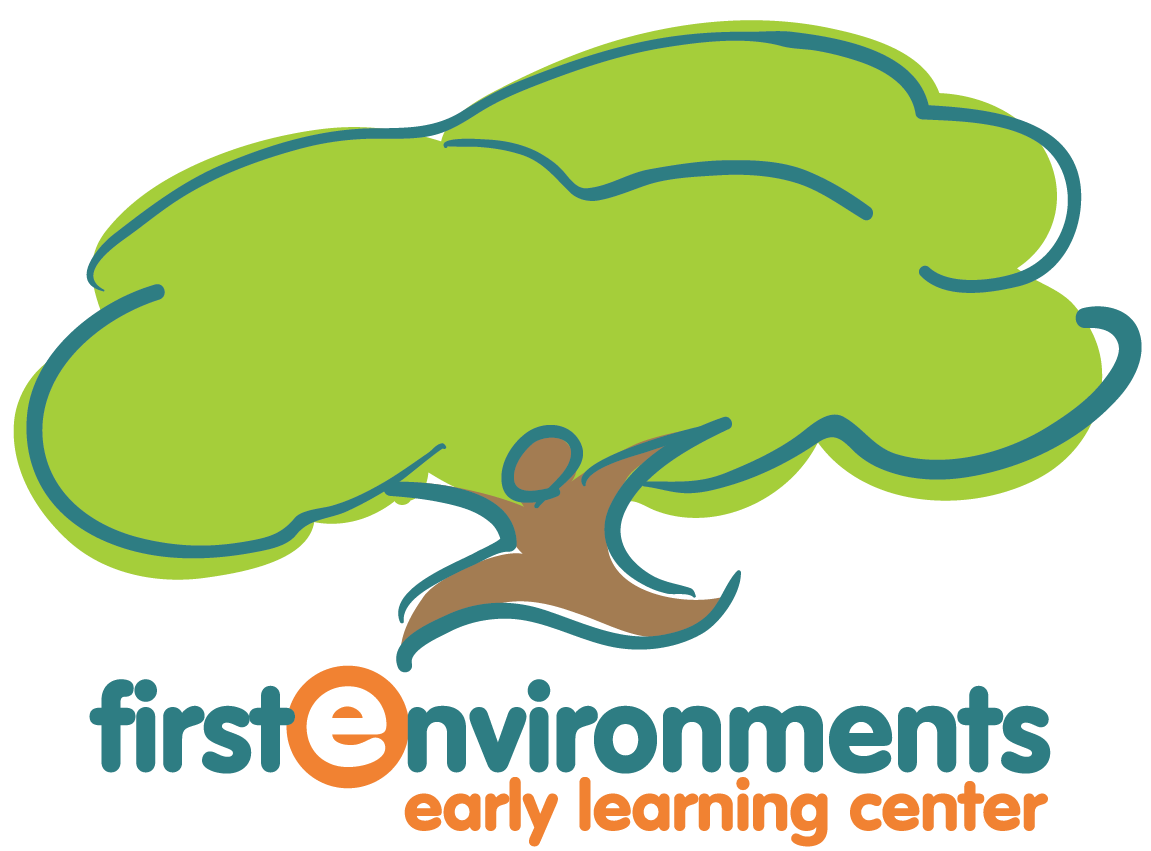Outdoor Learning
Our kids get dirty and we like it that way! Outdoor play and gardening promote early exercise habits, connects children to the natural world and teaches about good nutrition and care giving. As FEELC helps avert childhood obesity (complete with a good dose of Vitamin D) children gain a sense of accomplishment while they have fun.
Directed activities aside, children are encouraged to wander and wonder through FEELC’s grounds scattered with native, butterfly, vegetable and rain gardens. A sensory wall of pungent herbs, which also appear in lunches, leads to a greenhouse, play area and a stage. Natural areas encourage exploration from the ground up as children connect with plants and living creatures. FEELC also has a large wooded area with trails that to lead into camp areas, forts, and of course the magical fairy houses. The woods have become a favorite among our preschool children.
FEELC’s philosophy views nature as a ‘third teacher,’ after the children themselves and their classroom teacher. Sustainability, comfort outdoors, activity and stewardship for the soil, air, plants and animals that make up the natural world we all inhabit are just a few of the lessons nature teaches.
children gardening
The hands-down, hands-on favorite is the edible Seed to Table garden. Planted in raised beds made of discarded and donated materials, the garden beds illustrate creative reuse and the value of teamwork. The all volunteer effort to construct the beds modeled teamwork and collaboration.
Science, technology, engineering, math, motor skills, cooperation and care for smaller things are just a few of the lessons in the garden. Songs, dances and drawing about plants integrate the lessons and provide opportunities for children to share what they learn with classmates.
Eating the produce is no problem at FEELC. Children compete for fresh, seasonal produce that “they grew themselves.” FEELC strongly believe that educating palates early to enjoy fresh, seasonal, herb-flavored produce lays a foundation for a lifetime of good nutrition that averts obesity.
creating natural habitats
Most of the grounds are kept in their natural state for children to explore, but cultivating natural habitats teaches children that nature needs care to thrive. Questions about seasons, temperature, rainfall and the need to nurture smaller things arise effortlessly in the garden.
FEELC’s butterfly garden attracts insects for study, pollination and beauty while adding texture, scents and color. The rain garden collects stormwater runoff, leading to lessons about rain, water quality and why some plants prefer dry or moist conditions.
The sensory wall of herbs invites touching, sniffing and tasting. Once added to meals, children’s palates are educated early and they learn to enjoy low-fat seasoning. Container gardens made from discarded objects ranging from old boots and bike baskets to tires teach creative re-use of objects and supply living space for ornamentals.
The native plant garden demonstrates why how some plants are suited to certain locations while others — like the pineapple tree the children wanted to plant — were not the best choice. Questions and answers about climate, geography, temperature, how far favorite foods travel and air quality were seamlessly incorporated into play.
Bird baths, feeders, nesting boxes and visits from the local park ranger invite observation and questions about how living things need spaces to live, raise young and what foods they like. Songs, pictures and stories help children organize their thoughts and share what they learned with classmates and parents.
movement
Part of every day is devoted to movement. Self directed or led by teachers, children dance, run, jump and carry in age-appropriate activities designed to increase fine and gross motor skills, balance and strength. Incorporating daily activity from the beginning of each child’s life establishes lifelong habits of healthy activity.
the arts
Extensive use of found objects keeps FEELC operational costs low while fostering creativity and collaboration among staff and children alike. Art is a vehicle for learning and sharing what has been learned with other classmates. Individual, class and school-wide projects decorate the grounds and spur further learning.
Using found objects teaches lessons about recycling, reuse and sustainability. Children often bring items that would have been discarded at home to school. Staff members stretch instructional dollars with visits to junkyards and flea markets for low to no cost items for future lessons and projects.
The result is a comprehensive art program that adds little to no overhead costs to the facility.
Last updated: 1/26/2017

